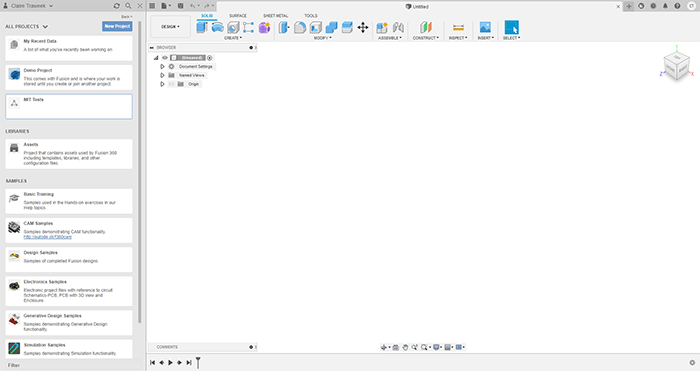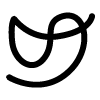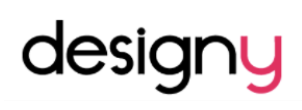2.00b Toy Product Design
Thermometer CAD

Here are the step-by-step instructions for customizing your thermometer housing and sending it to your friendly, 2.00b 3D printing service!
As described in Lecture 3, you CAD (2021), you'll load a base model with the design hardpoints and then add your own customizations. If you haven't set up Fusion 360 yet, you'll need to do that before getting started.
Explore the Fusion 360 Interface
Opening Fusion for the first time, you'll be greeted with something somewhat like this:

If you're unfamiliar with CAD, you might not be familiar with what all of the panels and buttons do. Not to fear, though, we've covered everything you need to get started below. Here's a simple example model (just a cube with a hole in it!) to introduce the interface :

- The Application Bar
The application bar lives at the very top of the screen, and is home to a handful of important buttons, namely save, undo and redo, the "file" menu, and the Data Panel toggle ( ). Pressing the toggle will hide or show the data panel, which is useful because it can free up some valuable screen real estate.
). Pressing the toggle will hide or show the data panel, which is useful because it can free up some valuable screen real estate.
- The Toolbar
This is where a lot of the functionality of Fusion 360 lives! Like a tool chest, the toolbar contains different instruments for cutting into, molding, or deforming your models. We'll talk about these more in depth shortly. - The Browser
Much like Firefox, Chrome, or other internet browsers that let you sift through the web, the browser is a versatile (and often underutilized!) tool in Fusion that lets you sift through your design without manually combing through your model. Of particular use is the Units setting under Document Settings, which lets you choose the units you want to work in. Under Origin, you can find the three planes and three axes all models start with, and under Bodies and Sketches you'll be able to view a list of features as you add them. - Data Panel
This is a feature that is not shared among other CAD software. The data panel is primarily your link into shared workspaces and models. You can create new projects, and view projects that you are already a member of. - Timeline (a.k.a. Design History)
A unique feature of Fusion 360 is the way it displays your design history, as pictured above. This timeline lies along the bottom of your workspace and shows a graphic for each action you've taken. Be aware that not every action begets an icon in the timeline! Things like adding color/material to a part won't be represented. The timeline is useful because it lets you roll back and fast forward through the steps you've taken during the CADding process by dragging the little vertical line around.

TIP: If you've used other CAD programs before, you may be used to different hotkey arrangements, and can modify Fusion's settings to accommodate what you're most comfortable with. More details here.


